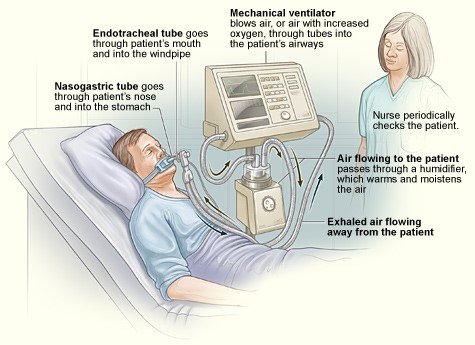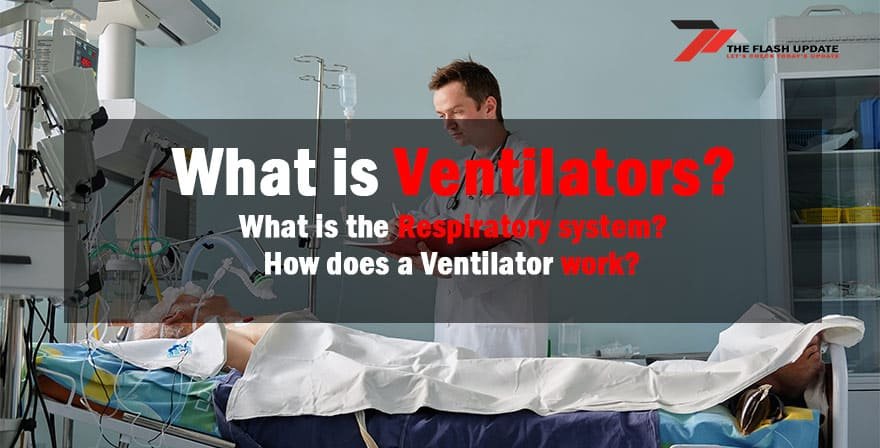What is a Ventilator ? & How do Ventilators work?
In news or in person you might have heard the term ventilators, or someone is in need of a ventilator. This is ever so come now in a Covid era, as SARS COV-2 affects a human’s respiratory system. But what is the respiratory system? What is a ventilator? How does it work? We’ll answer all your questions here.
Before we start, we would like you to know what is our aim, we aim to empower everyone who is reading this with knowledge and some awareness about the human body so that you don’t make any mistakes with it.
read more: Avoiding Mask & social distancing after Vaccination – Is it safe?
What is the Respiratory system?
A respiratory system is one of many systems which exists in a human body to work collectively in order to perform life actions that help us work, move, and pretty much help us do everything. It consists of the mouth, nose, Sinuses, Throat (Pharynx), Trachea, Bronchial tubes, lungs, and blood vessels which help us breathe oxygen and exhale the rest.
This oxygen is absorbed by our blood which then is called Oxygenated blood. This blood is then pumped into our body through arteries and De-oxygenated blood is brought back to our lungs by veins, which are then exhaled through the lungs and then with our nose.
With our respiratory system, we not only just breathe, but we talk and smell through it. It keeps our body temperature to normal, removes waste gases.
Do we exhale oxygen?
Yes, we do exhale oxygen out as well, as our lungs are not 100% efficient when it comes to absorbing oxygen. Some of it is just released with the rest of the gases like Helium, CO2, nitrogen, etc.
read more: When should a Covid-19 patient seek hospital admission?
What affects the Respiratory System?
There are many conditions that affect a human’s respiratory system which leads to the need for a ventilator, some of them are:
- Allergies
- Asthama
- Lung Infection
- Covid-19/ SARS COV-2
- Aging
- Lung Cancer
read more: Complete COVID-19 vaccine registration Guide with FAQ
What is a Ventilator?
In the 16th century, a physician conducted an experiment explaining how an animal can be kept alive, by inserting a tube in his trachea maintaining the blowing of air in and out of it. This was the first demonstration of a mechanical ventilator which helped in years to come as it leads to a discovery of a machine that could help a human breathe with the external assistance of a ventilator.
400 years later in 1928, 1st demonstration of a ventilator was done, which took the medicine world by surprise as it could help people with breathing issues quite easily. Today, it is a big part of our medical equipment and something we are in need of during this pandemic.
A ventilator is a machine that supports our respiratory system by helping it with the flow of air in and out, providing support that is much needed by any patient with a struggling system. It is also called a Respirator. In worse cases, it can help patients who can breathe with their lungs.
It can also be used during a surgery which helps doctors perform as they no longer have a risk of a respiratory system breaking down as a ventilator can support the patient, that’s how ventilators work.
read more: How to register on the Co-WIN portal? COVID Vaccine Registration
How does a Ventilator work?
 A Ventilator uses pressure to blow air in and out of the lungs, moving our diaphragm with external pressure, which is known as positive pressure. We can also alter the amount of oxygen level which a patient can receive with the help of the monitor you see attached to the Ventilators. Ventilators also have the inbuilt feature of an alarming system in case of an emergency, if it arrives, and makes sure that a patient is attended to when in need.
A Ventilator uses pressure to blow air in and out of the lungs, moving our diaphragm with external pressure, which is known as positive pressure. We can also alter the amount of oxygen level which a patient can receive with the help of the monitor you see attached to the Ventilators. Ventilators also have the inbuilt feature of an alarming system in case of an emergency, if it arrives, and makes sure that a patient is attended to when in need.
One end of the breathing tube is inserted into the windpipe of the patient, and the other end is attached to the ventilator. If a patient can breathe on their own and just needs support, he/she can be made to wear a respiratory mask. All this depends on the patient’s condition only, as not everyone is the same.
This system helps patients with the proper flow of oxygen and we all live on oxygen.
“You can live without food for days, but not with oxygen.”
read more: Best food in Covid-19 to boost immune system
What to expect while on Ventilator?
Ventilators normally don’t cause pain, but the breathing tube in the windpipe can irritate a patient or cause some discomfort. A patient can’t eat or breathe while he/she is on a ventilator. This is a major problem as people have a tendency to perform both these activities in their daily life. It limits a patient’s movement and can cause some moral problems to a patient.
Ventilator is one of the most important innovations, which have ever happened in this universe. They support life in a way that no other medicine can support. But people who are aware of it are blessed and should pray for people who are in need of it. Never the less we all have situations and conditions we fight. We hope you fight them well.
read more: What is a coronavirus? How coronavirus kills and spreading
